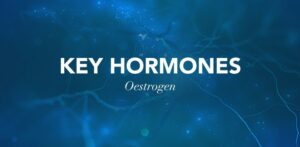 The human body contain a variety of tiny components – your hormones that are always working behind the scenes to make sure that your life can happen. These amazing gems work without you having to concentrate on what is happening, and they govern a large portion of what happens in the body. Some of the most misunderstood parts of the human body are the chemicals that influence sex, reproduction, and emotional responses. In the next few series, I’ll be focusing on hormones, how they are produced, what they do and specifically the female hormones and then we’ll talk hormone imbalance and how to address them.
The human body contain a variety of tiny components – your hormones that are always working behind the scenes to make sure that your life can happen. These amazing gems work without you having to concentrate on what is happening, and they govern a large portion of what happens in the body. Some of the most misunderstood parts of the human body are the chemicals that influence sex, reproduction, and emotional responses. In the next few series, I’ll be focusing on hormones, how they are produced, what they do and specifically the female hormones and then we’ll talk hormone imbalance and how to address them.
So what are hormones?
Hormones are extremely important chemical messengers that affect many aspects of overall health. The endocrine system is a network of glands that secrete hormones to regulate many bodily functions including growth and metabolism. Hormones affect every tissue and organ in the body. They impact everything from gut function, muscle growth and recovery to bone health and brain function.
Now what’s the deal with Oestrogen?
Oestrogen is a female sex hormone, and the majority of it is created in your ovaries however the adrenal glands and fat cells produce a small amount. You can think of oestrogen as the hormone of femininity because it’s associated with the physical features that we associate with being female. Oestrogen controls important processes in the body such as the menstrual cycle. It can also influence your weight and specific of other body tissues.
Oestrogen’s amazing role through life
One of the most interesting things about oestrogen, is how much it’s job changes through your life. When you are young and going through puberty, oestrogen sends signals to cause different parts of your body to mature such as the breasts. As you reach complete adulthood, oestrogen also activates the growth of adult characteristics like pubic and armpit hair. Oestrogen also keeps your body from continuing to ovulate when you become pregnant.
Types of Oestrogen:
Oestrone (E1):
The main form of oestrogen produced during menopause. Produced mainly in your liver and fat cells. Since toxins such as xenoestrogens, heavy metals, and other pollutants that directly affect hormone levels are stored in your liver and fat cells, individuals with higher levels of toxicity have altered and contaminated forms of oestrone.
Oestradiol (E2):
The major oestrogen is made in the ovaries. This hormone is known to play a huge role in energy, sleeping, sex drive, and healthy bones, skin, & hair. If your Oestradiol levels drop too much you may become prone to a reduced sex drive. You can stimulate this by always being on the lookout for a new toy for couples. If you don’t have a partner and are struggling to get your sex drive up, even with certain toys, there are other approaches you can take. You may be in need of a sex doll to boost your sex drive enough to enjoy sexual encounters. Having realistic skin may be what you need to raise your sex drive. It also helps support the mucous membranes, providing moisturization for the skin, lips, eyes and vagina. Oestradiol is a very strong growth stimulator and elevated levels are linked to greater risk of breast, uterine or ovarian cancers.
Oestriol: (E3):
This hormone is made in the liver and breast cells. Also, primarily made by the placenta during pregnancy. This form of oestrogen is a key regulator in determining which cells are turned on or off to oestrogen. This is a highly protective form of oestrogen that reduces cellular growth factors and other oestrogens. Oestriol reduces the more aggressive estradiol.
Effects of too much Oestrogen production
After a few decades of study, it has been a sad reality that higher levels of estrogen – known as oestrogen dominance – are linked to occurrences of cancer, fibroids, irregular periods, endometriosis ad PMS. Although these high levels were most common in women who are approaching or going through menopause most likely to develop breast cancer, however in the world we live in now, it’s unfortunately affecting more and more younger women. High levels of stress, poor diet, sedentary lifestyles and some environmental factors are linked to the causes of hormone imbalances in women. It should also be noted that women who are overweight are at a greater risk because fat cells also produce estrogen.
Tips to balance Oestrogen
- Follow an anti-inflammatory diet
- Minimize the use of chemical laden products that contain xenoestrogens which mimic the body’s natural oestrogen. Get off all oral contraceptives, hormone creams and hormone-based prescription medications
- Get regular exercise
- Reduce stress
- Get good quality sleep
- Focus on good hydration habits


Leave a Reply